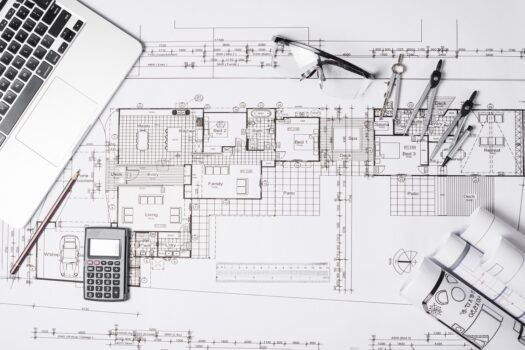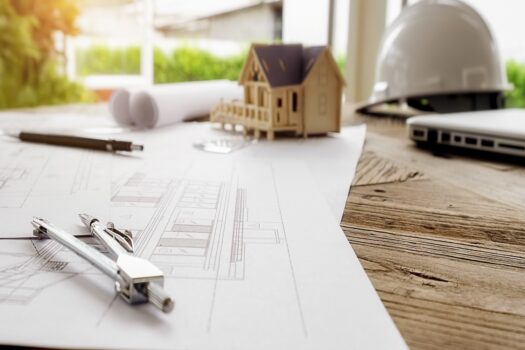The rapid advancement in technology, particularly in architecture automation, has prompted questions about the future role of architects. While automation systems, developed by leading tech firms, excel in quantitative tasks like floor planning, they cannot replicate the creative thinking and multidisciplinary coordination intrinsic to architects. This article delves into the nuances of why architects remain irreplaceable, despite technological progress.
Automation In The Architectural Field

Researchers have been devising ways to automate building designs ever since computers were introduced to the architectural field in the 1960s. They primarily focused on the optimization of floor plans to save both time and effort.
In fact, if you go through books like “The Automated Architect” by Nigel Cross, you’ll know more use of computers in quantifying travel time between rooms.
That said, it was expected that with time computers would eventually optimize floor plans based on other factors as well. But unfortunately, this didn’t pan out as postulated, turning out to no architect’s surprise.
A building doesn’t owe its success to the walking distance between rooms. So, even if computers were able to optimize floor plans quantitatively, they failed to account for the qualitative aspects of architecture, such as aesthetics, context, and spatial experience.
Nonetheless, the idea of architecture automation lives on. And this has led to the innovation of cloud-based computing and technologies that have helped computers tackle complex tasks related to designs.
Today, companies like Google and Autodesk are pursuing the potential of automated design by developing systems like CAD that learn the same way we as humans do. They refer to building codes, mechanical engineering textbooks, part catalogs, and even observe real-world examples.
However, these systems aren’t competitors to designers; they’re rather companions. They help those in the field create designs with proper planning and quantitative analysis.
That said, before diving more into the depth of these automation technologies, we’d like to address a primary question – can architects be automated? Well, the answer is simple – no, they can’t.

Why Can’t Architects Be Automated?
As we’ve already explained, the idea of automating architecture prevails even today, and with the developments of technology, architecture can be automated. But the same isn’t true for architects. To understand why, let’s take a look at how much automation already exists in the industry.
-
CAD Software
Now, CAD software has been around since the 90s. But even then, architects have to make the decisions related to the use of its digital drafting board. For instance, will it be used for planning, sectioning, elevation, or calculation?
These decisions need to be taken by the architect before they begin working. So, it’s quite evident that the designing process isn’t completely automated; a ton of human involvement is needed, especially in the initial stages of the project.
-
BIM (Building Information Modeling) Technology
BIM is a technology that allows you as an architect to complete a building from documented packages. In other words, you get unified models for each stage of the project, from planning to execution.
The best part about these models is that they contain data that can be synchronized with live previews of the work in progress. Plus, they hold a ton of information about past projects and previously built assets to help architects understand the risks and potential shortcomings of their designs.
Seeing these examples, it’s not wrong to say that machine learning and technologies have helped the automation of architecture to a certain extent. So, should architects worry about losing their jobs in the near future? Well, not exactly.
Despite the great recession, the number of employed architects has increased by 25% in the last 15 years. However, this doesn’t mean that computers haven’t affected the job market. Technology and outsourcing have managed to reduce the job growth of architectural drafters drastically.
If we go by the data provided by the U.S. Bureau of Labor Statistics, the start of the millennium had seen 20,000 more architectural drafters than architects in the U.S. But since then, the number gradually decreased, signifying the elimination of jobs in this industry. And the reason for this is evident.
Hence, we support the estimates of the University of Oxford researchers Michael Osborne and Carl Frey that architecture is one of the least likely professions to be automated in the next 20 years. Architects have a 1.8 percent chance of being automated, compared to an 89.4 percent chance for taxi drivers and a 93.5 percent chance for accountants.
Being a profession that requires both innovation and negotiation, human involvement is a must since these are the two skills even architect computers struggle with.

Testing Out Automated Designs
As you already know, Google and Autodesk have been trying out the latest technologies and systems to automate architecture. They have been successful to a certain extent, so before we conclude this guide, let’s take a look at these programs to know what the future holds for them.
-
The Dreamcatcher Project
Autodesk’s “The Dreamcatcher Project” is the next-generation CAD that helps designers craft designs with set parameters and goals. All you have to do is put in your constraints and the required data and it will generate different design options, allowing you to weigh their pros and cons individually.
-
Project Genie
Rest assured, Project Genie, an innovation of Google, will be a hit in the near future. Its primary objective is to reduce costs by 50 percent and the overall construction time by around 60 percent.
However, it was later rebranded to be presently known as Flux, providing a modeling interface similar to The Dreamcatcher Project, but on a larger scale. It also allows the developer to check the zoning laws and regulations of the land.
Now, these systems will definitely embark on a significant turning point in the architectural field. However, they cannot be relied on to adapt to real-world complications and problems.
They only come with the added advantage of machine learning, so architects need not worry about losing their jobs in the market. In fact, the systems might create more jobs and connect people, leading to the overall growth of a business model.

Final Words
There are prevailing arguments regarding the inability of computers to emote, and that’s obvious since they don’t come with five senses like us. As such, they not only have a limited understanding of the qualitative characteristics of a building but also fail to think creatively.
Today, we do have systems and technologies that can help identify the aesthetics of a building, provided they’re fed the right parameters. But even then, they fail to perform the real-life tasks of an architect.
The best alternative is to use automated technologies to your advantage. In other words, architects should rely on these systems to obtain accurate data faster, and in turn, use the saved time to focus more on creative designing.
On that note, we’ll now take your leave. Till next time!
Related Articles
The Best Jobs For Architects | Things To Consider
Where to Apply for Architecture Jobs Online Today
How to Ace a Skype [Web] Architecture Job Interview Right Now
Are Architecture Internships the Most Important Jobs Of Your Career?
Tips on How to Get an Architecture Job From a Post Online
Things to Consider Before Accepting Your [Architecture] Dream Job
What Questions To Ask In Your Architecture Job Interview?
Architecture Interview Attire Dissected | What to Wear to an Architecture Job Interview
All Architecture Jobs are in Cities
25+ Things to Consider Before Accepting Your [Architecture] Dream Job


